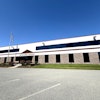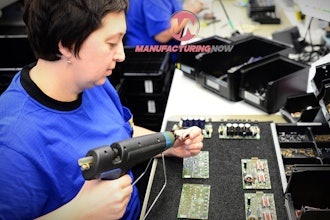This feature originally ran in the May 2011 issue of Food Manufacturing.
The Food Manufacturing Brainstorm features industry experts sharing their perspectives on issues critical to the overall food industry marketplace. In this issue, we ask: What is the biggest safety hazard for workers in the loading dock, and what can food manufacturers do to minimize their risk?
Michael Brittingham, Marketing Communications Manager, 4Front Engineered Solutions
Slippery floors are one of the major hazards at loading docks. According to the Bureau of Labor Statistics, slips and falls cause 15 percent of all lost-time accidents, with a disproportionately high number of these occurring at the loading dock. Considering their environment with the constant wash downs making floors wet and slick, food processing docks are particularly hazardous.
The solution for keeping dock floors drier and safer is installing the right loading dock equipment that minimizes moisture on the loading dock.
Dock doors — Dock doors take a beating from forklift traffic on tight, busy docks. In addition, standard metal doors can conduct heat, leading to condensation on the building interior. Even the slightest bump from a forklift can cause misalignment between the door panels and the doorframe.
Impactable dock doors can prevent those gaps from forming between the door panels and the doorway. Additionally, the doors are designed to withstand forklift collisions and the damage that can leave the doorways unprotected.
The door guides can also protect the doors and ensure moisture stays outside, if the weatherseal is mounted on the door panel rather than the doorframe. One Alabama poultry processor credits their impactable dock doors for preventing the dock from becoming an ice rink in winter.
Dock levelers — Common pit-style levelers have perimeter gaps that enable moisture build-up. Perimeter weatherseal systems are available that effectively close off these gaps without impeding leveler operation.
Wiper Pads — Dock seals and shelters keep out precipitation and should be properly maintained. Wiper pads prevent the rush of moisture on the truck trailer roof from saturating the dock floor.
Yard and Dock Management Systems — Along with tying the dock into the overall WMS, management now has a way to verify if and when a dock door is closed.
Mary Blaser, Director of Marketing and Business Development, Frommelt Products Corporation
We often think of forklifts, trailers and fast-paced, congested operations at the loading dock as being the main factors in creating a hazardous work environment in this area. Yet, remove all those things and you’ll spot a significant safety risk underneath: wet, slippery docks. Even with the best dock seal or shelter in place, rain and melted snow can still find their way onto the loading dock, producing wet — or icy — steel dock leveler plates.
Risk of injury increases sharply when surfaces aren’t clean and dry at the dock. Workers can slip; forklifts can slide down slippery ramps, impacting with force into trailer beds while servicing trailers below dock level, causing repeated stress injuries. What’s more, potential for product to be damaged or contaminated from water leaking in at the dock creates a whole new set of problems.
First, make sure your dock seals or shelters are in good condition. Next, and most importantly, apply a heavy, weighted trailer top seal in addition to the base seal or shelter. These seals create a dam that forces flowing water off the sides of the trailer before it can reach the dock door opening. Weighted trailer top seals are especially critical when the trailer is angled toward the door on a decline drive approach, or when yard jockeys are used. In these situations, the entire 450 square-foot surface of the trailer is literally funneling water onto the dock, and something solid and strong needs to be in place on top of the trailer to block the water flow.
A gravity-based secondary seal also maintains constant contact with the trailer as it moves up and down during loading and unloading, preventing water infiltration in a way that a traditional dock seal or shelter simply cannot.
Dave Norton, Director of Product and Manufacturing Engineering, The Raymond Corporation
Pedestrian interactions with lift trucks often are higher in the dock area than anywhere else in the building. Food manufacturers must train lift truck operators to always yield the right-of-way to pedestrians, to never drive lift trucks close to a pedestrian — especially someone standing next to a fixed solid object — and to sound their horns at intersections and cross walks. Food manufacturers also should consider limiting the opportunities for pedestrians and trucks to interface.
Food manufacturers also must manage the interface of their material handling equipment and over-the-road trucks. For example, trailer brakes should be set and trailers must always be chocked properly to prevent movement. Failure to do so can result in the trailer moving or rolling away and the lift truck traveling off the dock. Because of this potential, stand-up end-controlled lift trucks are designed with an open back so that, in the event of an emergency, the operators can step off the truck and move away quickly.
Food manufacturers also must ensure that lift truck operators inspect dockboards and the floors of over-the-road trailers to confirm they are in good condition and have the capacity to support the loaded weight of the lift truck; plus, operators should ensure dockboards are securely attached.
Michael Oilar, Product Development, Amerikal Products Corporation
An overlooked safety hazard in loading dock areas are gaps surrounding the dock plate and door. Gaps are accountable for liabilities and cost burdens to food manufacturing and distribution warehouses. Through these gaps, expensive controlled air escapes the facility and outdoor air seeps in, driving your energy costs up and threatening the stability of your products. Unprotected gaps are entry ways for unwanted outdoor elements including moisture, spores, insects and other airborne debris. The hazards of pests are obvious. Action can be taken to weather seal dock door frames and bottom door seals, yet these precautions do not block gaps related to the dock plate.
A one inch gap along the dock plate can be the culprit for the loss of thousands of dollars in excess heating and cooling expenses annually. These gaps can be responsible for fluctuating temperatures that can cause substantial damage to food shipments. In summer months, warm air entering the loading area can spoil meat and reduce shelf life of bakery goods. Cold air in winter months can destroy produce.
Water is another safety hazard. While weather sealing the dock door reduces water leakage, uncovered gaps surrounding the dock plate still allows water to enter the facility. Blowing rain and snow enter the dock plate area causing slippery conditions for workers and motorized equipment. Hazards here are physical and economical. The financial outcome of accidents can be serious. Boxes containing perishable foods are susceptible to moisture damage and retailers are hesitant to put these items on their shelves.
It is acknowledged that the maintenance of a facility is imperative for health and safety. With debris and unwanted elements entering gaps, maintaining a clean facility is a constant battle. Amerikal Products Corporation has developed an insulated dock blanket system with hardware to address the dock plate safety and energy issues arising from gaps surrounding the dock plate.


















